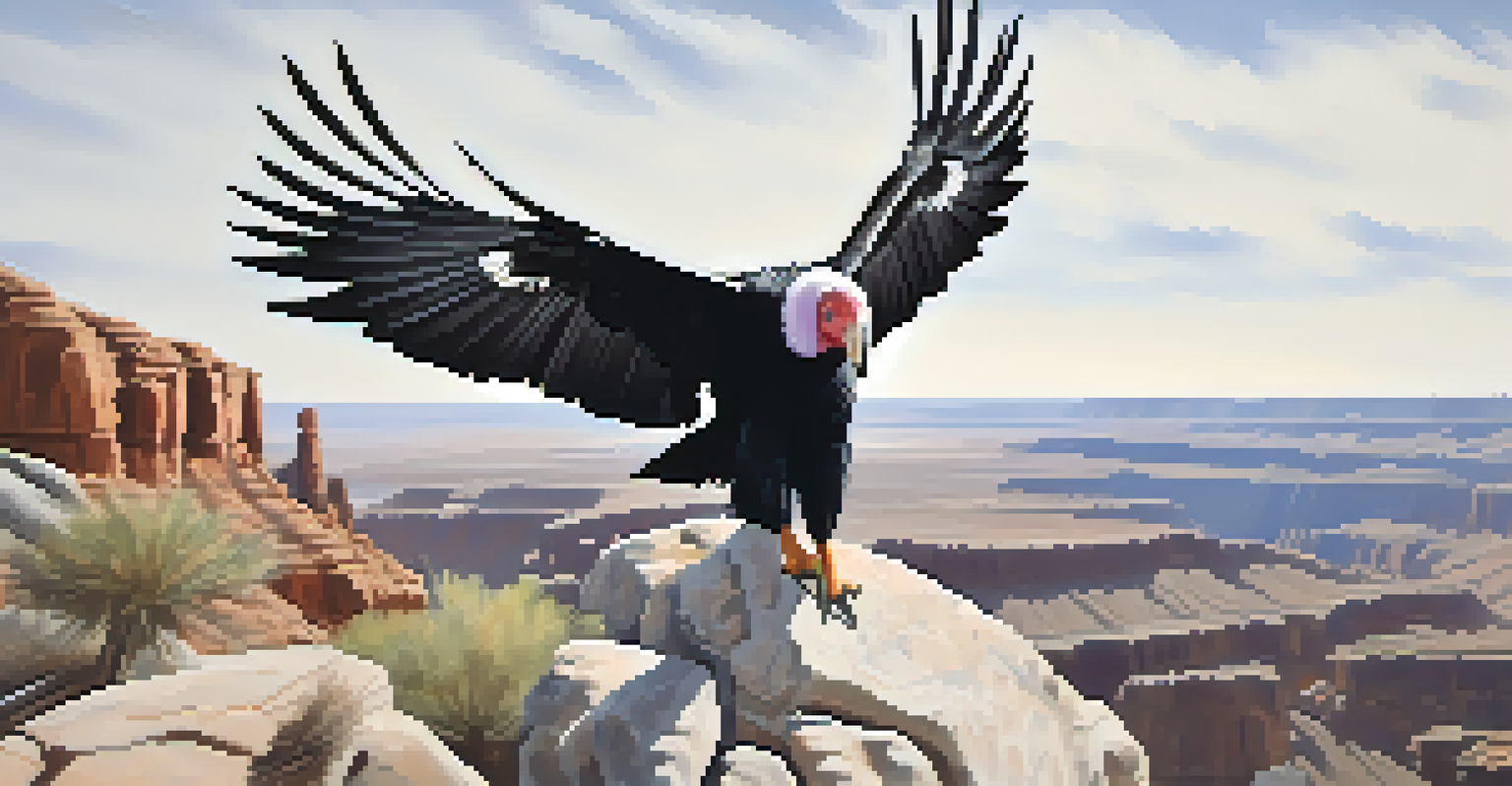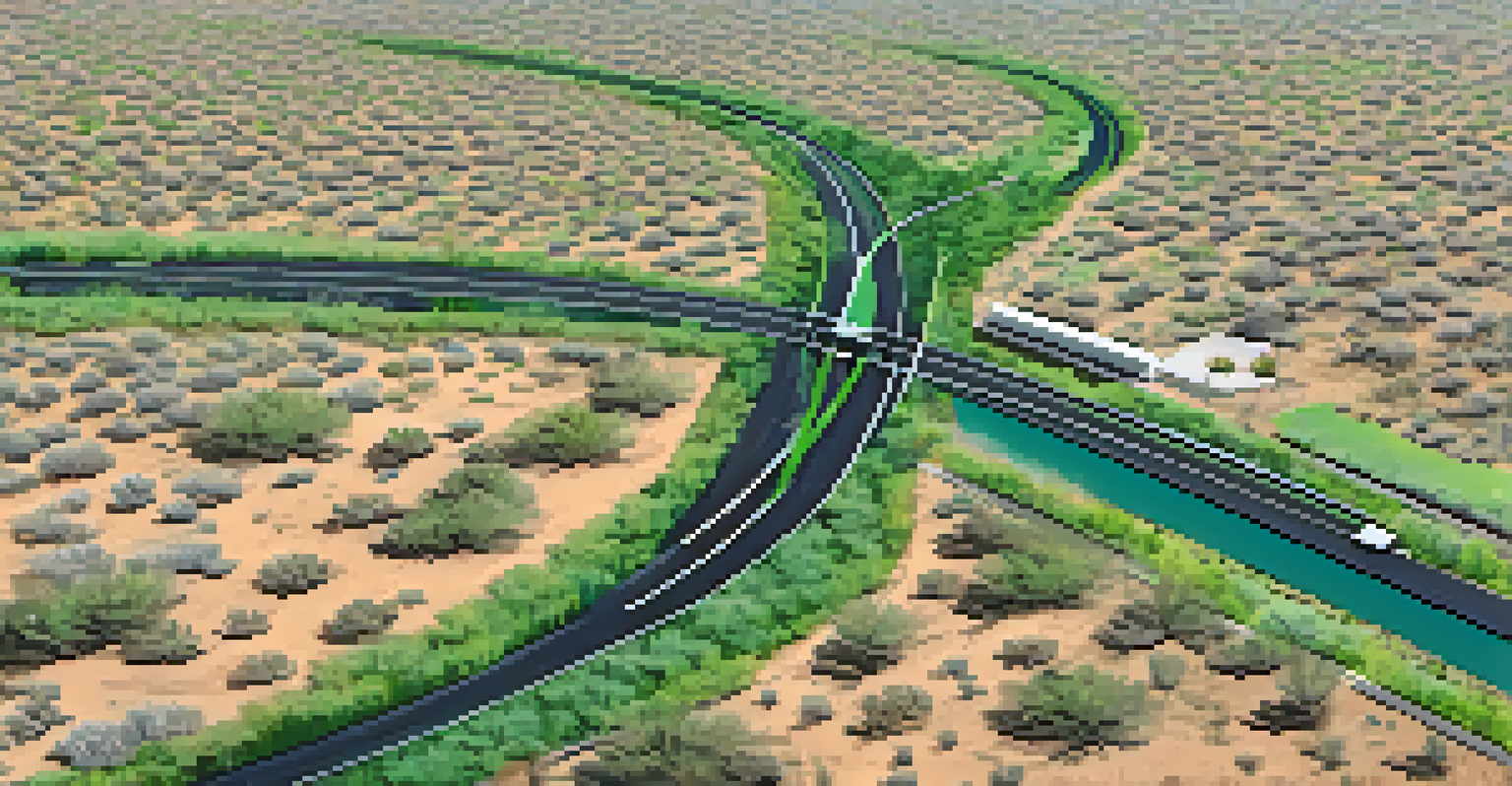Impact of Urban Sprawl on Arizona's Endangered Species

Understanding Urban Sprawl in Arizona
Urban sprawl refers to the uncontrolled expansion of urban areas into the surrounding countryside. In Arizona, this phenomenon is particularly evident as cities like Phoenix and Tucson grow rapidly, absorbing nearby lands. This expansion often leads to the development of housing, commercial spaces, and infrastructure, displacing natural habitats.
The greatest threat to our planet is the belief that someone else will save it.
As the population increases, the demand for more housing and services accelerates the spread of urban development. This not only alters the landscape but also fragments ecosystems, making it challenging for wildlife to thrive. For example, areas that once supported diverse flora and fauna now become dominated by concrete and asphalt.
In essence, urban sprawl transforms the environment, creating a patchwork of developed and undeveloped land. This change can significantly disrupt the delicate balance of local ecosystems, setting the stage for potential conflicts between urban growth and wildlife conservation.
Endangered Species in Arizona
Arizona is home to a variety of endangered species, many of which are uniquely adapted to its arid environment. These include iconic animals like the California condor and the Sonoran desert tortoise, both of which face threats from habitat loss. Understanding the plight of these species is crucial in grasping the broader implications of urban sprawl.

The state's diverse ecosystems, ranging from deserts to forests, provide essential habitats for these endangered species. Unfortunately, as urban areas expand, these habitats are increasingly encroached upon, limiting the space available for wildlife. This loss of habitat can lead to decreased populations and increased competition for resources among remaining species.
Urban Sprawl Threatens Wildlife
The rapid expansion of urban areas in Arizona disrupts natural habitats, endangering local wildlife and ecosystems.
Moreover, the fragmentation of habitats caused by urban development can isolate animal populations, making it difficult for them to breed and thrive. As these species struggle to adapt to shrinking environments, the risk of extinction looms larger, highlighting the urgent need for conservation efforts.
The Effects of Habitat Fragmentation
Habitat fragmentation occurs when large habitats are divided into smaller, isolated patches, often due to urban development. This can severely impact species that require large territories or specific conditions to survive. For instance, the jaguar, once prevalent in Arizona, has seen its range shrink dramatically because of fragmented habitats.
In every walk with nature, one receives far more than he seeks.
When habitats are broken up, animals may find it difficult to migrate, forage, or find mates. This isolation can lead to inbreeding and a reduction in genetic diversity, further threatening the survival of these populations. For example, the Gila monster, a native lizard, faces challenges as its habitat shrinks and becomes more fragmented.
In addition to direct impacts on wildlife, habitat fragmentation can also affect the overall health of ecosystems. As species disappear, the balance of the ecosystem is disrupted, leading to cascading effects on other plants and animals that depend on these endangered species.
Water Resources and Urban Expansion
Arizona's unique desert environment poses challenges for both urban growth and wildlife conservation, particularly concerning water resources. As urban areas expand, the demand for water increases, leading to over-extraction from natural sources. This can have dire consequences for the endangered species that rely on these water sources for survival.
For instance, the endangered southwestern willow flycatcher depends on riparian habitats, which are often threatened by urban development and water diversion. As these areas dry up or degrade, the flycatcher's breeding success is jeopardized, further endangering the species. Similarly, other species that rely on specific water resources face similar fates.
Habitat Fragmentation Impacts Species
As urban development fragments habitats, species struggle to survive due to isolation and reduced genetic diversity.
The struggle between urban water needs and wildlife conservation is a delicate balance that demands careful management. Sustainable practices and conservation efforts are essential to ensure that both human and ecological needs can be met in the face of ongoing urban sprawl.
Mitigation Strategies for Wildlife Protection
To combat the negative effects of urban sprawl on endangered species, various mitigation strategies can be employed. One approach is to create wildlife corridors, which are designated areas that connect fragmented habitats and allow animals to move freely between them. These corridors can help maintain genetic diversity and support population stability.
Another strategy involves implementing land-use planning that prioritizes the conservation of critical habitats. This can include zoning regulations that limit development in sensitive areas and promote sustainable practices. For example, protecting riparian zones can help preserve essential habitats for species like the endangered Yuma clapper rail.
Community engagement and education are also vital in these efforts. By raising awareness about the importance of protecting endangered species and their habitats, residents can become active participants in conservation initiatives, fostering a sense of stewardship for Arizona's unique wildlife.
The Role of Policy and Legislation
Effective policy and legislation play a crucial role in addressing the challenges posed by urban sprawl to endangered species. Laws like the Endangered Species Act aim to protect vulnerable species and their habitats, but enforcement can be challenging amid rapid urban growth. Local governments need to prioritize wildlife conservation in their planning processes.
Additionally, collaboration between state and federal agencies, as well as non-profit organizations, is essential to create comprehensive conservation strategies. By working together, these entities can develop policies that balance the needs of urban development with the protection of endangered species.
Community Engagement is Essential
Involving local communities in conservation efforts fosters a sense of stewardship and promotes sustainable practices.
Public support for conservation policies is also vital. When communities advocate for measures that protect wildlife, it becomes easier for policymakers to implement necessary changes. Grassroots movements can lead to significant shifts in how urban planning considers ecological impacts, ultimately benefiting both people and wildlife.
Community Involvement in Conservation Efforts
Community involvement is key to successful conservation efforts in Arizona. Local residents can contribute by participating in habitat restoration projects or advocating for sustainable development practices. Engaging communities in the process fosters a sense of ownership and responsibility towards protecting local wildlife.
Educational programs and outreach initiatives can raise awareness about the importance of preserving endangered species and their habitats. For example, workshops on native plants or wildlife-friendly landscaping can empower residents to create environments that support local ecosystems. In turn, this knowledge can spark further interest in conservation and activism.

Ultimately, when communities come together to support wildlife conservation, the impact can be profound. By nurturing a culture of stewardship, Arizona can work towards a future where both urban development and endangered species coexist harmoniously.